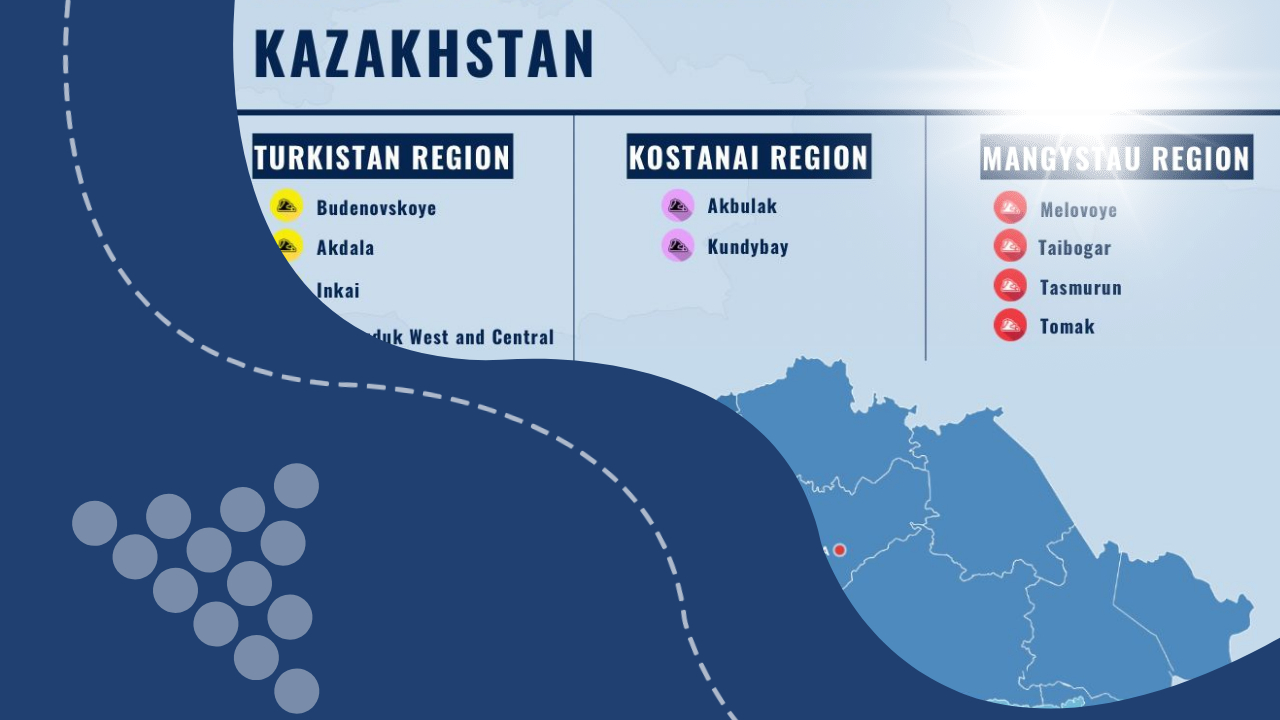Kazakhstan produces and processes 19 types of essential raw materials included in the list of critical raw materials for the European Union (EU), reported the Ministry of Industry and Construction on Feb. 6. The list updated by the EU in 2023 includes 34 critical raw materials.
The raw materials from Kazakhstan are also exported to China, the EU, South Korea, the United Kingdom, the United States and Russia.
“Kazakhstan’s producers supply the European market with metal and chemical products such as beryllium, tantalum, titanium, ammonium metavanadate, and phosphorus,” said the ministry in a statement.
Kazakhstan is also among the world’s top 10 copper-producing countries. Kazakhstan boasts opportunities to establish a cluster for battery material production, such as nickel, cobalt, manganese, and lithium.
Rare metals and rare earth metals are considered critical types of raw materials in demand by leading sectors of the global economy, necessary for the transition to green energy, the development of digital technologies, defense, aerospace, medical, and other high-tech areas.
“One of the main problems in the rare metals mining industry is the dependence on imported raw materials. Additionally, the development of the production of essential raw materials is hindered by the wear and tear of technologies and equipment at enterprises,” said the ministry.
These issues are outlined in the comprehensive plan for the development of the rare earth metals industry for 2024-2028, which was approved by the government on Dec. 28.
According to the document, the main problems of the domestic rare metals and rare earth metals industry are low level of geological exploration, low level of assessment and commercial exploitation of technogenic mineral formations, wear and tear of the main assets of enterprises, and underdevelopment of the regulatory framework for the industry.
The ministry noted it is working on the tasks for the next five years. Overall, 15 rare earth deposits registered in the state are spread across three regions of Kazakhstan: Turkistan, Kostanai, and Mangystau. Data from the National Geological Service also indicates Kazakhstan possesses a raw material base of rare metals, including tungsten with 2.2 million tons of reserves, molybdenum with one million tons, lithium with 75,600 tons, tantalum with 4,600 tons, niobium with 28,100 tons, beryllium with 58,000 tons, among others.
Kazakhstan’s Minister of Industry and Construction Kanat Sharlapaev headed the Kazakh delegation at the Raw Materials Week in Brussels in November. Speaking at a panel session in Brussels, Sharlapaev said critical materials represent a blueprint for a new chapter in the Kazakhstan-EU cooperation.
“Our country is not just rich in terms of the mineral base. It has been a reliable partner for the EU, particularly contributing to its energy security through oil supplies and to the nuclear energy sector through uranium supplies. Now, Kazakhstan is ready and committed to integrate itself with the value chain of critical materials, which was aptly named critical for our green energy transition,” he said back then.
__________________
Photo credit: strategy2050.kz.

